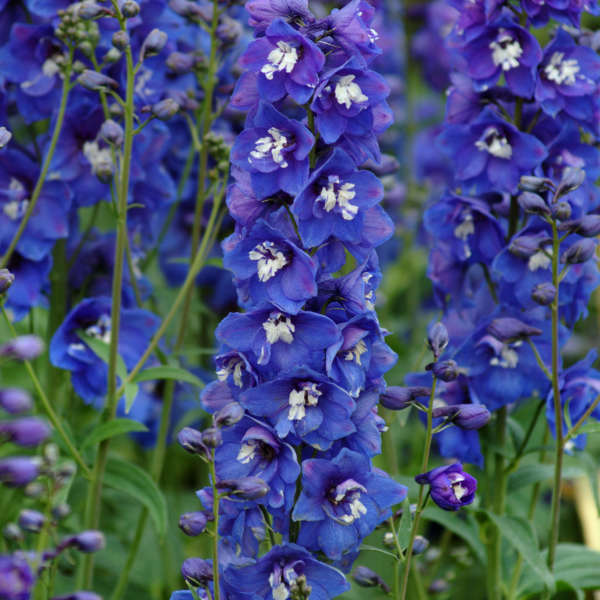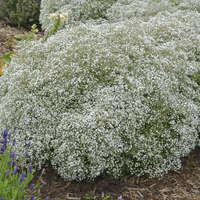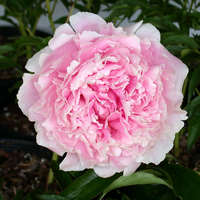Delphinium elatum 'Dasante Blue'
Common Name: Hybrid Bee Delphinium
If you love the look of true blue Delphiniums but don’t want to have to stake them, try ‘Dasante Blue’. It produces the same large spikes of vibrant blue flowers with purple highlights and white central bees as typical tall Delphiniums but in a more compact package. Strong stems carry the prominent blossoms above the dark green, deeply dissected foliage in early summer and then again in late summer or early fall.
Growers will appreciate this new selection for its compact, uniform habit, a good response rate to PGR treatments, and a slightly earlier bloom time than typical Delphiniums.


